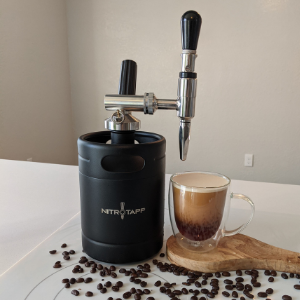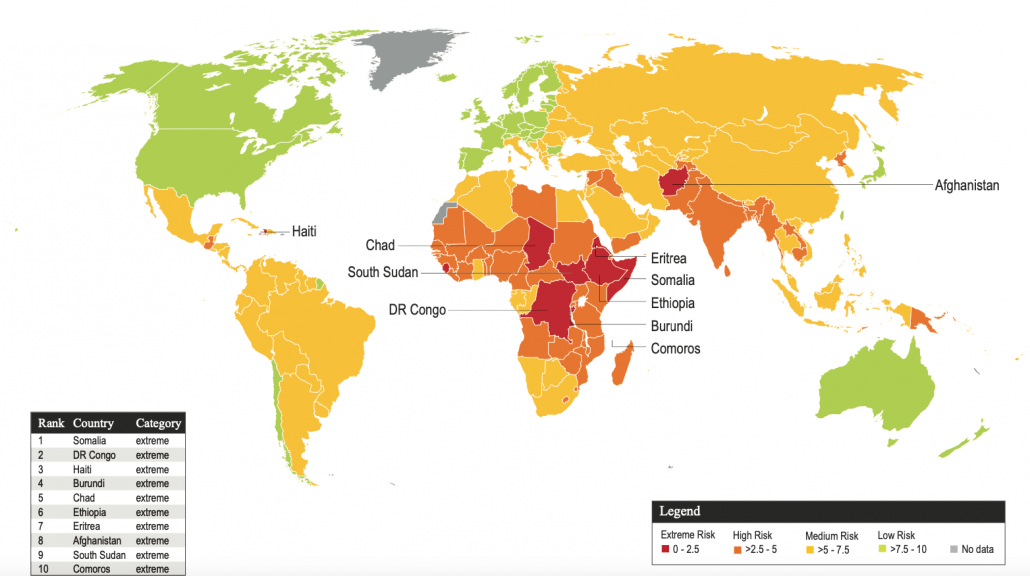
You have the option of choosing between moderate-intensity or high-intensity cardio. It is important to consider which exercises are best for your cardio workout. This article will cover the advantages and disadvantages of each type of cardio. Walking is a great cardio workout. Walking has many benefits, and you can even exercise in the same place.
Cardiovascular exercise of high intensity
High-intensity cardio is essential for weight loss. This can be achieved by varying the intensity and duration of exercise. This allows you to burn more calories as well as fat per unit time. For example, exercising at moderate intensity can burn around 100 calories/minute, while exercise at high intensity can burn about 200 calories. Different techniques will work for different people. Different exercises will work for different body types. Therefore, it is important to experiment with different workouts.
Cardio with high intensity is great for building endurance and stamina, as well as weight loss. You will lose more calories if you increase the intensity. Besides this, it will also strengthen your heart and lungs, which are important components of your overall health. You should incorporate cardio exercises into your daily routine to maximize your results. For the best results you need to combine high-intensity, low-intensity cardio.

Low-intensity cardio
Low-intensity cardio is great for weight loss. Low-impact exercises are also easier on the joints, making them more beneficial for people with weaker joints. Walking, biking and swimming are all common low-intensity exercises. There's no clear connection between high and low-intensity cardio, but all kinds of low-impact exercises are beneficial for weight loss.
One study examined the effects of low intensity cardio on an empty stomach and fasting. Participants were either fasted overnight, performed low-intensity cardio on an empty stomach, or consumed a meal replacement shake before the workout. The subjects also ate a caloric shortage diet. Both groups experienced similar weight loss. The study showed that both groups lost approximately the same weight.
Moderate-intensity cardio
If you are serious about losing weight, you've probably heard that high-intensity cardio is the way to go. What is moderate-intensity cardio, you ask? Medium-intensity cardio can be done at a lower intensity than high-intensity cardio. This is because it is not performed at speeds exceeding 80% of your maximum heart beat. Your body will burn more calories in this type of workout than it does with carbs.
It all depends on your fitness level and personal preferences. Although it is more difficult, high-intensity cardio can help you lose weight quicker. If you have trouble burning fat with moderate-intensity cardio, you should consider a low-intensity cardio routine. Low-intensity cardio will be better for your joints and muscles than high-intensity. If you are able to do these workouts for an entire hour, your body will begin to burn more carbs than fat.

Walking
Walking is a great cardio exercise for weight loss. Walking does not affect muscle gain which is important for those trying to lose weight. Walking is also very easy to recover from, meaning you can walk for hours and burn calories while not affecting your weight-room progress. What's the best part? It's free! Here are some tips to maximize your walking time. Try these techniques to lose weight quickly and safely! Find a regular routine and stick with it.
First, you should challenge your cardiovascular endurance. Your fitness level and cardiovascular endurance are important factors in losing weight. The higher your heart rate, the more calories you'll burn. To find out your maximum heart rate, subtract your age from 220 and multiply by 0.6. For example, a 30-year-old's maximum heart rate is 190 beats per minute, and walking at 60 percent intensity would require 114 beats per minute.
FAQ
Can I eat fruits during intermittent fasting?
Fruits are great for you. They provide vitamins, minerals, fiber, antioxidants, and other nutrients. But, they can also contain sugar that can spike blood glucose levels. This can cause insulin resistance and weight gain. When you are trying to lose weight on an IF diet, make sure you eat low glycemic fruit such as apples, pears or berries.
What foods are good for me to lose weight quickly?
By eating less calories, you can lose weight quicker. There are two ways to do this:
-
Reduce how many calories you eat daily.
-
Physical activity can help you to burn more calories.
Reducing the number of calories you eat is easier said than done. It's no surprise that we are constantly bombarded with high-calorie fast food options. But, here's a list of foods that will help you shed those extra pounds.
-
Beans are rich sources of fiber, protein, and other nutrients. They contain almost no fat, making them an ideal choice for dieters who want to reduce their caloric intake.
-
Oatmeal is low on calories but high in nutrients, such as magnesium or potassium. Plus, it contains less sugar than other cereals.
-
Eggs contain high levels of protein and cholesterol. Eating eggs once or twice a week can boost your metabolism, helping you burn more calories throughout the day.
-
Whole grain bread reduces hunger pangs. This can help you feel fuller and longer.
-
Dark chocolate is loaded with antioxidants and flavonoids, substances that have been linked to lower blood pressure and improved heart health.
-
Cottage cheese is rich with calcium, which helps build strong bones. Cottage cheese is also high in calcium, which aids in bone strength.
-
Salmon is packed with omega-3 fatty acids, which promote brain development and improve cardiovascular function.
-
Green tea is chock-full with catechins. These compounds fight cancer and boost metabolism.
-
Broccoli is an excellent source of folic acids, which helps to lower homocysteine levels. A higher risk of developing heart disease and stroke is associated with high homocysteine levels.
-
Yogurt, which is low in sugar, is a great option to add probiotics to your diet. Probiotics are essential for digestive health.
-
Berries make a great snack and are very nutritious. There are many great sources of vitamins, minerals in blueberries, strawberries, blackberries and raspberries.
-
Avocados are packed with healthy fats. A half avocado contains 80 calories and plenty of fiber.
-
Nuts are a tasty snack option that also happens to be a great source of protein. All kinds of nuts are great choices, including almonds.
-
Sweet potatoes are another starchy vegetable that's packed with beta carotene, which makes your skin glow. The orange variety is particularly beneficial because they contain higher amounts of beta carotene than regular sweet potatoes.
Is there a difference in intermittent fasting and calorie restrictions?
Calorie restriction is a way to eat less than your body needs. Intermittent fasting is different because it doesn't involve restricting calories. Instead, Intermittent Fasting is about eating fewer calories per day.
Intermittent fasting is more effective because it allows you to enjoy foods you love without feeling guilty.
Both methods have pros and cons. Decide which one you prefer.
What Amount of Weight Can You Lose In A Week?
Your current bodyfat percentage determines the amount of weight you will be able to lose. To begin, you need to determine how much weight that you would like to lose. Next, find your BMI (Body Mass Index). Your BMI is a measure of how much weight you need to lose. If your BMI is 25 or greater, you're overweight. If your BMI is more than 30, you are obese.
For example, if 200 pounds is your BMI, it would be 28.7. This means that you'd need to lose around 70 pounds to get down to a healthy weight range. To see if you're overweight, visit www.healthyminds.com/bmi/.
Once you have your BMI, you are able to use this formula for calculating how many pounds each week you will lose.
(Your Goal Weight - Current Weight)/BMI * 7 Number Of Pounds Lost Per Week
For 50 pounds to be lost in one month, it would take 2 weeks of exercise. 56 days is equivalent to 7 pounds per day. This equates to an average of 8.3lbs per week.
You could also try this calculator from www.weightlosscalculator.net. It gives you a rough estimate of how many calories you should eat daily to lose 1 pound per week.
How Much Exercise is Required to Lose Weight?
The amount of exercise needed for weight loss depends on several factors, including age, gender, body type, and how much you weigh. Most people require moderate activity at least five days per week.
The American College of Sports Medicine recommends 150 minute of moderate-intensity aerobic activities per week. These should be done over three days.
If you are trying to lose 10 pounds, 300 minutes of moderate intensity exercise per week is a good goal. This includes activities such swimming laps (brisk walking), biking, dancing and playing tennis.
For those just starting out, you might consider 20 minutes of vigorous activity every other week. That could include activities like lifting weights, sprints, jumping rope, or fast walking.
Aerobic exercise helps to build muscle mass and burn calories. Muscles burn more calories than fat. So building muscle while losing weight may help you achieve your goal faster.
Is there any side effect to intermittent fasting?
Intermittent fasting doesn't have any known side effect. But, it is possible to experience minor side effects if you plan poorly.
If you skip breakfast, your day might be interrupted by irritability. Headaches, dizziness, fatigue and muscle cramps are all possible.
These symptoms usually disappear within a few days.
Why not lose weight before your 40th birthday?
Maintaining health and fitness is the most important thing for people over 40. It is vital to find healthy ways to stay active throughout your lifetime. This includes regular exercise, eating right, not smoking, moderate alcohol, and regular exercise.
It is important to recognize that our bodies change as we age. Our bones start to weaken, and our muscles start to shrink. We can slow down the aging process by taking care of ourselves.
Staying healthy and fit throughout your life is a great way to keep yourself young. These are some of the benefits:
-
Better sleep
-
Better mood
-
Increased energy levels
-
Lower risk of cancer
-
A longer life
-
More independence
-
Better sex
-
Improved memory
-
Improved concentration
-
Greater circulation
-
Stronger immune system
-
Fewer aches and pains
Statistics
- One study in 9 active men found that HIIT burned 25–30% more calories per minute than other types of exercises, including weight training, cycling, and running on a treadmill (18Trusted Source (healthline.com)
- Another study found that 24 weeks of weight training led to a 9% increase in metabolic rate among men, which equated to burning approximately 140 more calories per day. (healthline.com)
- According to a study sponsored by the American Council on Exercise, a person weighing around 140 pounds (64 kg) would burn 108 calories at a 30-minute beginner's Pilates class or 168 calories at an advanced class of the same duration (26). (healthline.com)
- Among women, the increase in metabolic rate was nearly 4%, or 50 more calories per day (14Trusted Source (healthline.com)
External Links
How To
9 easy ways to lose weight naturally
Weight loss is a common problem faced by many people around the world. When you are trying to lose weight it is very hard to maintain a healthy lifestyle. Although there are many methods to lose weight, such as exercising and dieting, these methods don't work for everyone.
Today, I'll share natural ways to lose weight that don't have side effects. Let's start!
-
Drink Lemon Water. Lemon water flushes toxins from your system. This drink can detoxify your body, and it will keep you energized all day. Consuming this drink each day can help you lose weight.
-
Eat More Vegetables. Vegetables are rich in fiber, vitamins, minerals and antioxidants that are vital for our health. They also provide us with a feeling of fullness. Eating vegetables can help you lose weight.
-
Increase Protein Intake. Protein is an important nutritional element that plays an important part in building muscles. A high-protein diet will help you gain lean muscle mass and reduce your weight.
-
Green Tea. Green tea has caffeine, which lowers appetite and speeds up metabolism. It has been shown that caffeine can increase thermogenesis, which is the process of creating heat. Thermogenesis explains why coffee drinkers are more likely to consume lower amounts of fat than non-coffee users.
-
Cold showers are a good option. You can burn more calories by taking cold showers. Research has shown that cold showers can help you burn more calories than warm ones.
-
Avoid Alcohol. Alcohol is known to be a stimulant, which can lead you to overeating. Alcohol consumption can cause weight gain.
-
Cardio Exercise Daily. Cardiovascular exercise has been proven to reduce weight. It improves blood flow, increases energy, and keeps you in shape. You can participate in walking, jogging, swimming, cycling, hiking, dancing, running, rowing, etc.
-
You shouldn't skip meals. Eat small meals throughout each day to manage your hunger pangs. Skipping meals can lead to fatigue, lack of concentration, and even depression.
-
Reduce Sugar Consumption. Sugar can make you feel irritable and addictive. Sugar temporarily gives you energy, but once you stop eating sugar you will feel tired and slow.